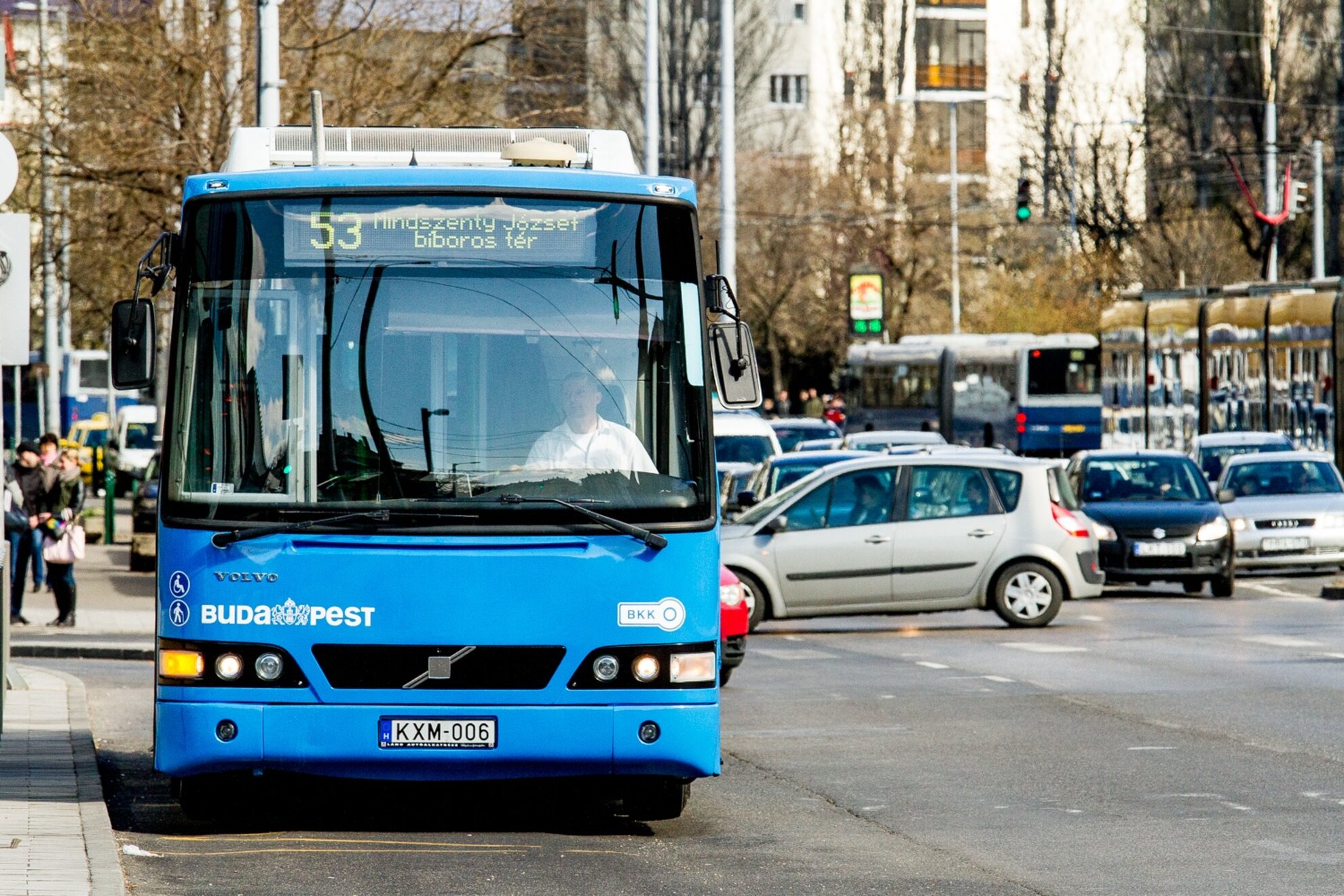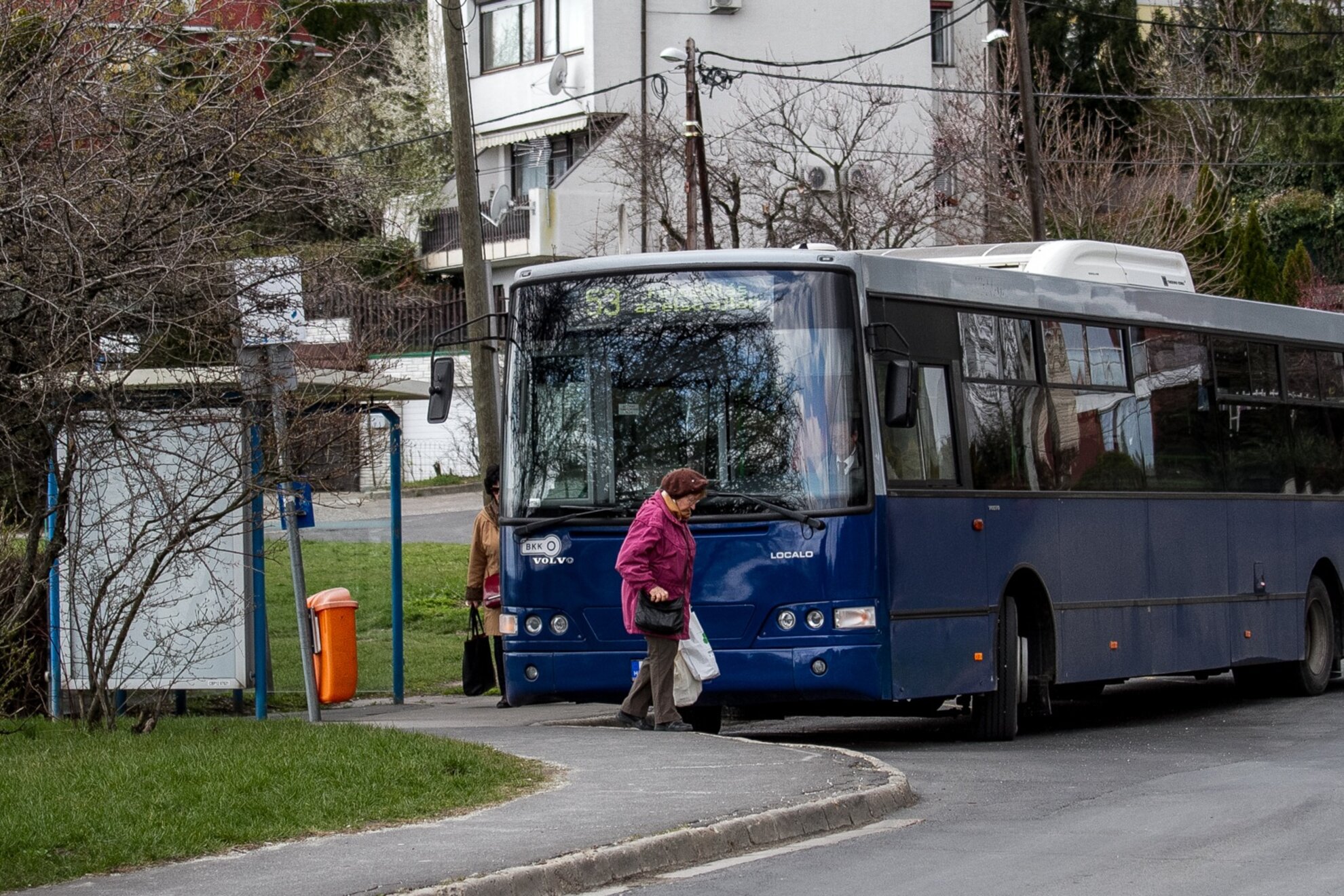Located at the south-Buda terminus of tram 4 (not 6), Újbuda-központ is experiencing rapid development amid a section of the city that was already quite crammed – here we find a stop for the newly completed M4 metro line below the Fehérvári Street Market and intersecting major thoroughfares, complicated by a massive underground parking structure beneath the recently constructed Allee Shopping Center, across the road from sunshine-blocking apartment buildings. Throughout it all, swarming throngs of people are constantly coming and going amid honking car horns and commingling conversations – a frenetic setting that seems more apropos to downtown Pest than Buda, the side of the city ordinarily prized for having a tranquil tone.

But in the middle of all this lies the starting point for bus 53, taking passengers from Újbuda-központ along some of Buda’s busiest boulevards to the highway leading toward Lake Balaton, before taking a right into ever-lusher suburbs as the journey heads further uphill. We pass pretty family homes and then the hillside Farkasrét Cemetery before coming to the bus route’s last stop at Mindszenty József bíboros Square, and immediately after disembarking we already enjoy the sensation of being above it all.

Here beside a still-gleaming 2013 statue of Cardinal Mindszenty (the mid-20th-century leader of the Catholic Church in Hungary, persecuted by the fascists during World War II and then by the communists afterwards, before taking political refuge in Budapest’s USA embassy for 15 years), a small park presents widespread views over the southern sections of Budapest and far beyond – yet this panorama is just a taste of what’s to come after a short hike further up Széchenyi Hill.

From the roundabout of Mindszenty Square we walk a few meters up Rácz Aladár út before taking a left on Rácz Aladár köz, and at the end of this cul-de-sac a forested hillside trail begins with a campfire ring amid a shaded knoll. At this point we’re entering a huge swath of protected woodlands, and after a few minutes of hiking up this path we are completely surrounded by nature – although we must remain fairly alert while ascending this sometimes-steep track, because mountain bikers sometimes zip downhill along it with little warning.

After a matter of strenuous minutes we emerge into a broad hilltop meadow dominated by a familiar sight – the 192-meter-tall antenna tower visible from many parts of downtown Budapest, here scraping the sky so dramatically that we must tilt our heads far back to see where the tip touches the heavens. This is the peak of Széchenyi Hill, and from here we enjoy far-reaching views to the southeast across the Great Hungarian Plain, with the Danube snaking through industrial areas toward wide-open spaces that seem to stretch on forever.

Here at this high altitude where passing weather systems first tumble over the summit and into Budapest, the climate can be chaotic – during our recent early-springtime visit, friends flew kites amid the strong winds as bright sunshine would become suddenly obscured by thick clouds; for a few moments it was actually snowing. So, while this spacious meadow provides plenty of picturesque places for spreading out a picnic blanket and savoring an alfresco feast, it would be wise to bring an extra jacket just in case a cold front comes rolling in.

From here we can explore several other fun destinations nearby – including the cherished Children’s Railway – but first we must suggest an alternative way to reach the same area from Mindszenty Square. Instead of traversing the trail that begins at Rácz Aladár köz, we can also walk further along Rácz Aladár út until taking a left up steep Ágnes út, leading through construction sites to Széchenyi-emlék út.

During Hungary’s belle-époque era in the late 1800s, this hilltop neighborhood became increasingly popular among Budapest’s most wealthy families, and here they built many grand villas that still stand today; passing by them as we slog uphill, we can only imagine how nice it must be to live in these classic mansions with sweeping views over Budapest from almost every window.

A little further up Széchenyi-emlék út we reach another peak crowned by the Széchenyi Monument, a grand stone lookout point designed by Opera House architect Miklós Ybl. Surrounded by evergreens, this lofty landmark is fronted by a bust of Count Széchenyi (the wealthy 19th-century statesman known as “The Greatest Hungarian” thanks to his philanthropic efforts to improve this nation, such as bankrolling construction of the Chain Bridge), and from this beautiful belvedere we gaze out over the Magyar metropolis from a unique perspective of seeing the undulating Buda Hills cascade toward the Danube from above, all while spotting gigantic structures like the Parliament House, Citadel, and Buda Castle appearing like miniature models.

After soaking in the view, from here it’s a level walk along Rege út to the same area we described earlier; you can’t miss it if you follow the towering antenna. However, follow Rege út to the intersection with Golfpálya út to discover one of the most iconic attractions of Széchenyi Hill – the top station of Budapest’s Cogwheel Railway (beginning by Városmajor Park near Széll Kálmán Square, providing another way to reach this area with only one public-transport ticket).

Across the intersection from the Cogwheel Railway terminus, the venerable Kőbüfé restaurant occupies a charming stone house with a huge covered terrace and a pleasant interior dining room with wooden rafters; here delicious Hungarian cuisine is served with a casual spirit and quite reasonable prices, enhanced by historical photographs of the Cogwheel Railway (dating back to when it was powered by steam locomotives) and Soviet-era promotional imagery for the nearby Children’s Railway.Taking a right with bellies full when exiting the Kőbüfé, we pass a large sylvan playground before seeing the Children’s Railway terminus straight ahead. Appearing hardly changed from when it was first built, this depot is a living relic from Hungary’s communist period; here kids are encouraged to pursue a career in public transportation by allowing them to work on a real narrow-gauge train line that traverses the Buda Hills ridge. Check out the detailed mosaics and old-time railroad machinery to turn a visit to this station into a trip through time, even without riding the train.Walking back toward the antenna, we pass by a white apartment building on Agancs út with an interesting claim to fame – this is where Hungary’s very first television broadcasts were created and sent across Budapest’s airwaves between 1954 and 1958, before TV operations were moved to the nearby transmission tower still in operation today, with this technological achievement commemorated by a solemn stone plaque.

Continuing back toward the modern TV tower, we admire the facility entrance decorated with an intriguing relief statue of a woman seeming to gaze upwards toward the soaring structure, typical of many public artworks created during Hungary’s communist times; we’re glad that this cleverly designed relic still decorates this site today.

From here it’s just a short stroll back to the panoramic grassy field that we visited earlier; at this point other hiking paths continue through the surrounding woods, all awaiting personalized exploration… but for now we head back down the trail toward Mindszenty Square and the urban scene of downtown Buda beyond, our spirits buoyed up by the knowledge that we can easily return to this pleasant peak on bus 53 any day of the week.




